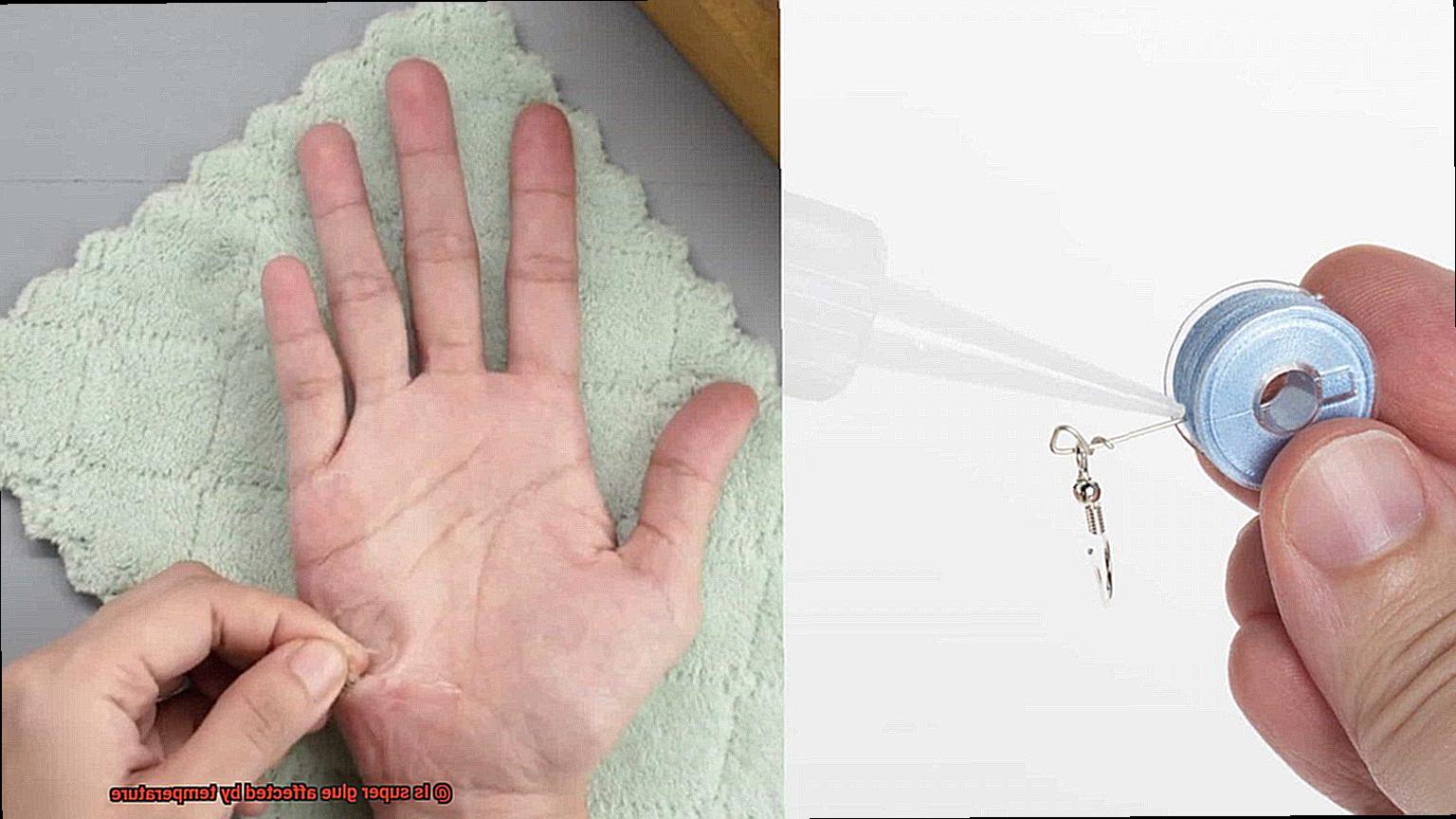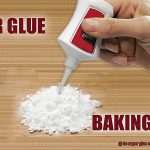Today, we’re going on a wild ride into the world of super glue and its arch-nemesis: temperature. You might think this sticky superhero can handle anything Mother Nature throws at it, but hold on tight because we’re about to uncover the truth.
Get ready for a mind-blowing journey through the science of stickiness.
What is Super Glue?
Contents
- 1 What is Super Glue?
- 2 How Does Temperature Affect Super Glue?
- 3 Low Temperature Effects on Super Glue
- 4 High Temperature Effects on Super Glue
- 5 Different Types of Super Glue and Their Temperature Tolerances
- 6 Recommended Temperature Range for Optimal Bonding with Super Glue
- 7 Avoiding Extreme Temperatures When Using Super Glue
- 8 Cooling or Heating Surfaces to Optimize Performance of Super Glue
- 9 Storing Super Glue at the Right Temperature
- 10 Conclusion
Super glue, also known as cyanoacrylate adhesive, is a remarkable adhesive that has transformed the way we repair, create, and build. With its fast-acting properties and ability to form strong bonds, understanding the ins and outs of super glue is essential for achieving reliable connections. In this article, we will explore the composition, quick-action properties, and sensitivity to temperature fluctuations of super glue.
Composition and Bonding Power:
Super glue’s secret lies in its composition. Composed primarily of ethyl-2-cyanoacrylate, a clear liquid that polymerizes upon contact with moisture, this adhesive creates a strong bond between various materials such as plastics, ceramics, glass, metals, and even some rubber surfaces. Its rapid curing process means that within seconds of application, the glue hardens, creating a bond that can withstand significant forces. This makes super glue an ideal choice for countless applications around the house, workshop, or crafting table.
The Impact of Temperature:
Temperature plays a crucial role in the performance of super glue. Extreme heat or cold can influence the adhesive’s effectiveness and bonding strength. Freezing conditions can cause super glue to become brittle and more prone to cracking or breaking. On the other hand, high temperatures can cause the adhesive to soften or weaken. Therefore, it is important to consider the specific temperature conditions in which your bonded object will be placed to ensure optimal performance and longevity.
Tips for Success:
To maximize the potential of your super glue bonds:
- Choose the right glue: Different types of super glue have varying temperature tolerances. Select one that suits your specific needs.
- Avoid extreme temperatures: While super glue can tolerate normal household or working environments, it is best to avoid exposing bonded objects to extreme heat or cold whenever possible.
- Follow instructions: Always refer to the manufacturer’s instructions for guidance on temperature ranges and handling precautions.
- Prepare surfaces: In certain cases, cooling or heating the surfaces being bonded can optimize the adhesive’s performance. Refrigerating or freezing materials before application can enhance bonding strength, while preheating surfaces can accelerate curing in colder environments.
How Does Temperature Affect Super Glue?
Let’s explore how temperature affects super glue and uncover some tips for optimal usage.
Adhesion Strength:
- Low temperatures slow down the chemical reaction that occurs when super glue comes into contact with air and moisture. This leads to longer drying and setting times.
- High temperatures speed up the drying process, resulting in faster bonding. However, excessive heat can weaken the bond, making it brittle and less durable.
Curing Time:
- Cold temperatures extend the time it takes for super glue to cure, requiring patience when working in chilly environments.
- Hot temperatures accelerate curing, so caution is needed to apply the glue quickly and in smaller amounts to avoid fast drying.
Shelf Life:
Tips for Different Temperatures:
- In colder temperatures, warm up the surfaces you intend to bond with a hairdryer or generate friction and heat by rubbing them together.
- When working in hotter conditions, work swiftly and use less glue to prevent rapid drying.
Specialized Formulations:
- Different types of super glue may have varying temperature ranges for optimal performance.
- Specialized formulations are available for extreme temperature conditions, so consult manufacturer instructions or seek out these products if needed.
Low Temperature Effects on Super Glue
Unlock the secret behind super glue’s reaction to temperature and discover the ultimate guide for achieving flawless adhesion. From the icy grip of low temperatures that slow down drying times to the scorching heat that can turn bonds brittle, we’ll navigate through this adhesive adventure.
When it comes to low temperatures, super glue can be quite temperamental. The decrease in temperature can cause the glue to become less viscous, making it difficult for it to flow and spread evenly. This results in weaker bonds that may not hold up under stress. It’s like trying to build a house with frozen bricks – it’s just not going to hold up.
But fear not, fellow adhesive enthusiasts. There are ways to mitigate the negative effects of low temperatures on super glue.
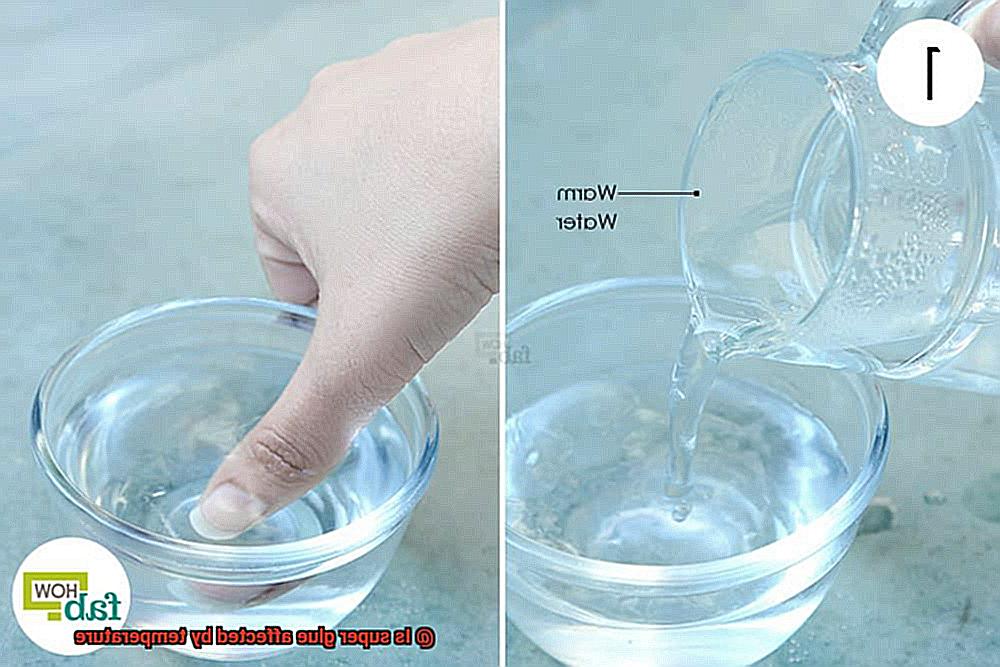
- Pre-warm the surfaces: Gently heating the materials with a hairdryer or placing them near a heat source before applying the glue can help increase its effectiveness in colder temperatures. Think of it as giving your glue a warm hug before it gets to work.
- Store at room temperature: Keeping the glue itself at room temperature before use is essential. Storing it in a cool, dry place will help maintain its effectiveness in colder environments. Remember, your glue needs some love too.
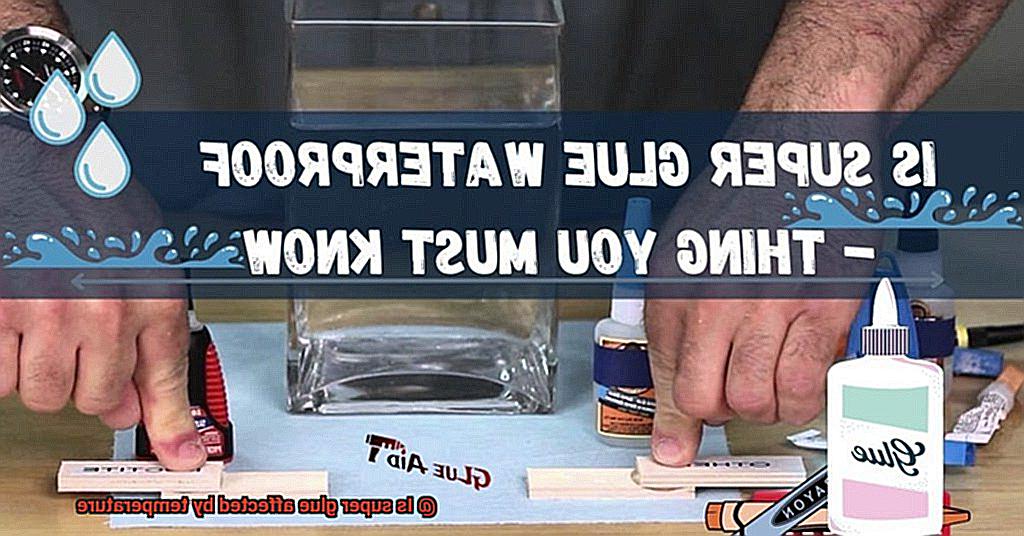
It’s also crucial to follow the manufacturer’s instructions when using super glue, as different formulations may have specific temperature recommendations. In fact, some manufacturers offer specialized glues designed specifically to withstand low temperatures better than standard varieties. These glues are like superheroes that thrive in freezing conditions, ready to save the day when you need them most.
High Temperature Effects on Super Glue
Super glue, also known as cyanoacrylate adhesive, is a remarkable bonding agent that can work wonders in many situations. However, when it comes to high temperatures, things can get a little tricky. Let’s explore the effects of heat on super glue and how to navigate them.
First and foremost, high temperatures can weaken the bond of super glue. When exposed to heat above 150 degrees Fahrenheit (65 degrees Celsius), this adhesive superhero may start to lose its strength. The heat causes the glue to break down, resulting in a weaker bond or even complete failure. It’s like watching your favorite hero lose their powers.
But fear not, my adhesive aficionados. Different types of super glue have different heat resistance properties. Some are specially formulated to withstand higher temperatures, making them perfect for applications where heat exposure is likely. So, choose wisely and select the right type of super glue for your specific needs.
Here’s an interesting twist: high temperatures can actually speed up the curing process of super glue. Curing is when the adhesive fully bonds and reaches its maximum strength. When exposed to heat, the curing time decreases significantly, which means your items will bond faster. However, this can also be a challenge if you need more time to position or adjust the glued pieces before they become firmly bonded. So, work quickly or opt for a less accelerated option if precision is key.
But wait, there’s more. Extreme heat can make your super glue more brittle and prone to cracking. Prolonged exposure to high temperatures can dry out the adhesive and reduce its flexibility, leading to a fragile bond. That’s not ideal if your glued items will be subjected to mechanical stress or sudden temperature changes. Think of it as trying to hold together delicate glass in a sauna – not the best combination.
Ah, one more thing to consider: if you’re using super glue on heat-sensitive materials like plastic or rubber, high temperatures can cause them to deform or melt. This directly affects the performance of the adhesive and can compromise its ability to bond effectively. So, always check the compatibility between your super glue and the materials you’re bonding, especially if high temperatures are involved. Matchmaking is essential.
Now, let’s talk prevention. To combat the negative effects of high temperature on super glue, there are a few things you can do. Firstly, choose a heat-resistant formulation of super glue if your application will involve exposure to elevated temperatures. Don’t send your adhesive into an inferno unprepared. Secondly, try to avoid exposing glued items to excessive heat whenever possible. If you know your bonded objects will face high temperatures, consider using alternative bonding methods or specialized adhesives designed for those conditions. Adaptability is key.
Different Types of Super Glue and Their Temperature Tolerances
Super glue is a remarkable adhesive that can join materials together swiftly and securely. However, its performance can be influenced by temperature fluctuations. In this article, we will explore the diverse types of super glue and their temperature tolerances, ensuring you select the ideal adhesive for your project.
Cyanoacrylate Adhesive: Swift but Temperamental
Cyanoacrylate adhesive, renowned for its rapid drying and robust bonding abilities, is a popular type of super glue. However, it is sensitive to temperature changes.
To achieve optimal results, use within the temperature range of 50°F to 85°F (10°C to 30°C).
In colder temperatures, the curing process prolongs, resulting in weaker bonds.
Conversely, excessive heat accelerates curing, leading to fragile bonds.
High-Temperature Super Glue: Enduring Extreme Heat
For applications in scorching environments, high-temperature super glues are available.
Formulated with specialized additives to maintain adhesive strength at elevated temperatures.
Widely used in automotive, aerospace, and industrial sectors.
Can withstand temperatures up to 250°F (120°C) or higher.
Epoxy Adhesive: The Heat-Resistant Powerhouse
Epoxy adhesive is another super glue variant capable of tolerating high temperatures without compromising performance.
- Consists of two components requiring mixing prior to use.
- Generally surpasses cyanoacrylate adhesive in heat resistance.
- Certain epoxy adhesives endure temperatures up to 300°F (150°C) or higher.
Extreme Cold: Conquering Arctic Conditions
- Specialized super glues cater to extreme cold environments like the Arctic.
- Regular super glues may falter under freezing conditions.
- Opt for a super glue specifically engineered for low-temperature resistance.
Manufacturer Guidelines: A Crucial Reference
- Thoroughly reading and adhering to the manufacturer’s instructions on temperature limits is essential.
- Some super glues lose adhesive properties or become brittle in extreme temperatures.
- Optimal bonding performance is achieved by choosing a super glue suitable for the anticipated temperature range.
Recommended Temperature Range for Optimal Bonding with Super Glue
Well, temperature may be the sneaky culprit behind your bonding woes. Today, we’ll delve into the world of super glue and unveil the recommended temperature range for achieving optimal bonding. So, grab a cup of coffee and let’s embark on this sticky adventure.
Temperature Matters:
Super glue, also known as cyanoacrylate adhesive, possesses remarkable bonding capabilities. However, like any meticulous artist, it has its temperature preferences. It thrives when conditions are just right, making it akin to a picky eater.
The Sweet Spot:
So, what’s the magic number? The recommended temperature range for optimal bonding with super glue typically falls between 50°F and 90°F (10°C to 32°C). Within this range lies the zone where the glue can work its magic, creating robust and enduring bonds that withstand the test of time.
Chilly Challenges:
When temperatures dip below 50°F (10°C), super glue becomes sluggish in its curing process. It takes its sweet time to bond properly, leaving you impatiently waiting for a connection. In extreme cold temperatures, well, let’s just say super glue might decide to take a nap instead of fulfilling its intended purpose.
Hot Headaches:
On the other hand, when things heat up above 90°F (32°C), super glue can get a bit too excited. It dries out rapidly or becomes brittle, resulting in weaker bonds. Picture running a marathon in scorching heat – not exactly ideal for optimum performance.
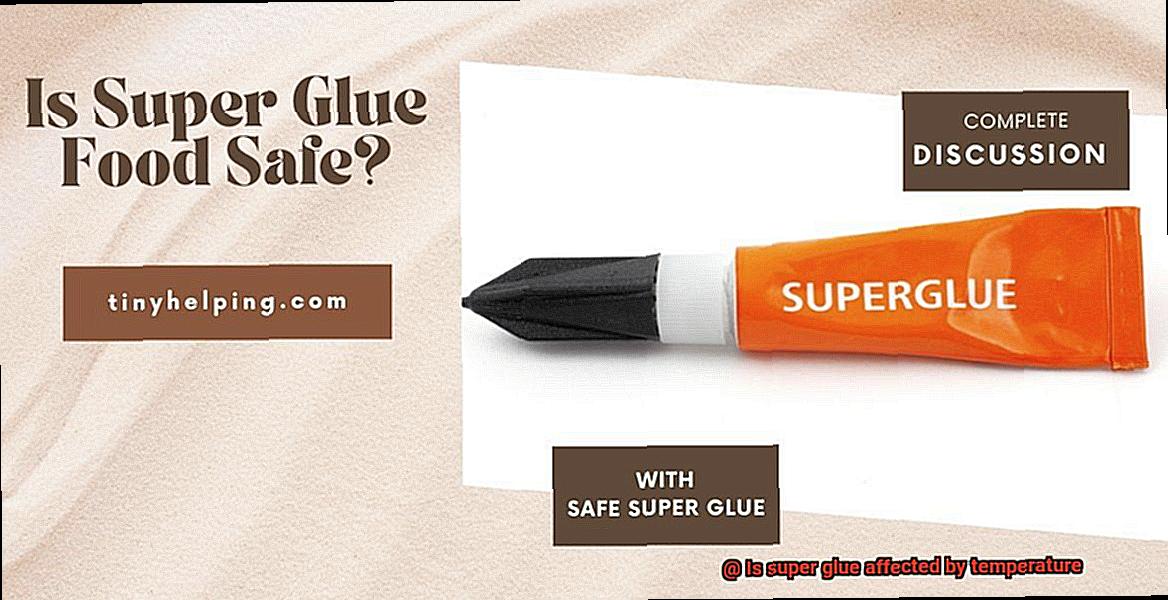
Tips and Tricks:
To help you achieve optimal bonding, here are some handy tips:
- Pre-warming: In colder temperatures, warm up the surfaces you want to bond using a hairdryer or gentle heat source. But tread cautiously to avoid overheating and damaging the materials.
- Cooling Down: When encountering hotter temperatures, cool down the surfaces before applying super glue. Utilize the fridge or a cooling fan to lower their temperature slightly. Ah, how refreshing.
Remember, extreme temperatures can make super glue throw a tantrum. Avoid subjecting it to excessive heat or cold, as this compromises its adhesive properties and leads to weaker bonds or potential failure.
Humidity Matters Too:
Oh, and let’s not forget about humidity. High humidity speeds up the curing process, while low humidity slows it down. To ensure optimal performance, store your super glue in a cool, dry place.
Avoiding Extreme Temperatures When Using Super Glue
Super glue, also known as cyanoacrylate adhesive, is a versatile and reliable adhesive that many of us rely on for various projects. However, it’s crucial to be aware that extreme temperatures can have a negative impact on its effectiveness.
Here are some potential risks of using super glue in extreme temperatures and strategies to avoid them:
Temperature ranges for best results:
- High temperatures: When super glue is exposed to high temperatures, it can break down and lose its bonding strength. To avoid this, store the adhesive in a cool and dry place, away from direct sunlight or heat sources. Check the manufacturer’s recommendations for the optimal storage temperature and ensure you don’t exceed it. If you know you’ll be working in hot environments, consider using specialized formulations designed for high-temperature conditions.
- Cold temperatures: Extremely cold temperatures can also affect super glue, causing it to become less viscous or even freeze. To prevent this, store the adhesive in a temperature-controlled environment, such as a toolbox or cabinet, especially if you live in an area with freezing winters. Allow the surfaces you’re bonding to reach a moderate temperature before applying the glue. Look for specialized low-temperature resistant super glues if you need to work in cold conditions.
Methods of controlling the environment’s temperature:
- If you’re working in an environment with extreme temperatures, consider using heaters or fans to regulate the temperature and create a more suitable working environment. This can help ensure that both the adhesive and the surfaces being bonded are within the optimal temperature range.
- In situations where precise temperature control is required, such as in industrial applications or when bonding sensitive materials, using a temperature-controlled chamber or oven can be beneficial. These devices allow you to set and maintain the desired temperature throughout the bonding process.
Tips for avoiding extreme temperatures in general:
- Plan your projects accordingly and try to schedule them during periods of moderate temperatures. This can help minimize the risks associated with extreme temperature conditions.
- If you’re working outdoors, try to avoid the hottest parts of the day or the coldest times of the year. Working in the early morning or late afternoon when temperatures are milder can help ensure better results with super glue.
- Consider using alternative adhesives for projects that require bonding in extreme temperature conditions. There are specialized adhesives available that are designed to withstand high or low temperatures without compromising their effectiveness.
By following these strategies, you can help avoid the negative effects of extreme temperatures on super glue and ensure better results for your projects. Remember to store the adhesive properly, check the recommended temperature range, and consider using specialized formulations when necessary.
Cooling or Heating Surfaces to Optimize Performance of Super Glue
Today, we delve into the fascinating world of temperature control and how it can optimize the performance of our trusty super glue.

Let’s begin with the power of cooling surfaces. Imagine working on a complex project that demands precise alignment and positioning. By cooling the surfaces before applying super glue, you can extend the glue’s working time. How cool is that? Literally. Cooling reduces the temperature, slowing down the curing process and giving you ample time to make those critical adjustments and achieve perfection.
So, how do we achieve this cooling effect? Simply grab an ice pack or place your materials in the fridge for a short while. But beware. Extreme cold may result in condensation, which can affect the adhesive’s performance. To ensure optimal results, allow everything to reach room temperature and dry thoroughly before applying super glue.
Now, let’s move on to heating surfaces. Heating can be a game-changer when dealing with porous materials like wood. It decreases the viscosity of the super glue, making it easier to spread and penetrate those absorbent surfaces. It’s like giving your super glue a warm embrace before it goes to work.
To heat things up, employ a trusty heat gun or set your hairdryer to low heat. However, exercise caution not to overheat your materials and risk damage. Begin by testing their heat tolerance and gradually increase the temperature if needed.
But here’s a pro tip – be swift. Super glue cures faster at higher temperatures, so ensure proper alignment before applying heat.
However, a word of caution: super glue bonds are not fans of extreme temperature variations in the long run. Such fluctuations can cause materials to expand or contract, potentially weakening or breaking the bond over time. Thus, it’s crucial to bear this in mind when planning your projects.
By understanding and controlling temperature, you can unleash the full potential of your super glue. Cooling extends working time, while heating aids penetration – it’s a winning combination.
Storing Super Glue at the Right Temperature
The answer may lie in how you store your super glue and the temperature it is exposed to. In this section, we will delve into the best practices for storing super glue at the right temperature and what can happen if it is not done properly.
First and foremost, let’s talk about the impact of extreme temperatures on super glue. Whether it’s scorching hot or freezing cold, both can have a detrimental effect on the performance and shelf life of this powerful adhesive.
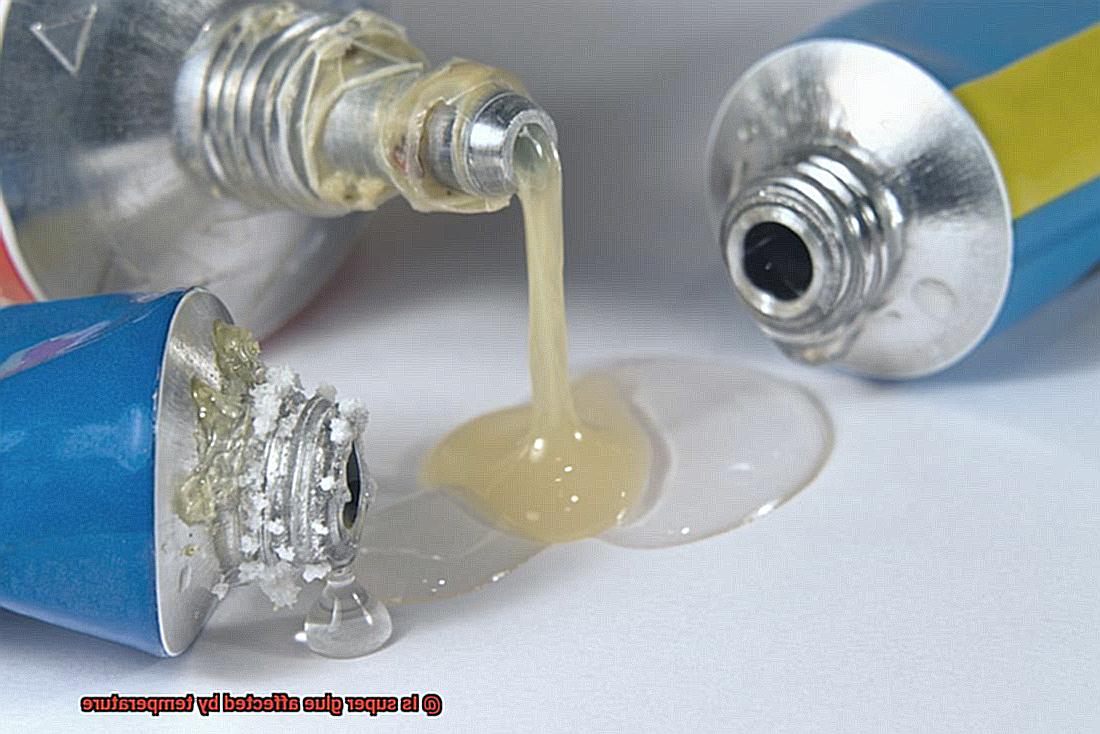
High temperatures can cause the glue to become less viscous or even solidify, making it nearly impossible to use. On the other hand, low temperatures can cause the glue to thicken and lose its adhesive properties.
So, it’s essential to store your super glue in a cool and dry place to ensure its effectiveness.
Now, you might be thinking, “Can I just store my super glue in the refrigerator?” Well, here’s where things get interesting. Storing super glue in a refrigerator is not recommended. Why? Because it can lead to condensation inside the container, which can affect the quality of the glue. Moisture is one of the worst enemies of super glue as it can cause premature curing or make it lose its adhesive properties altogether.
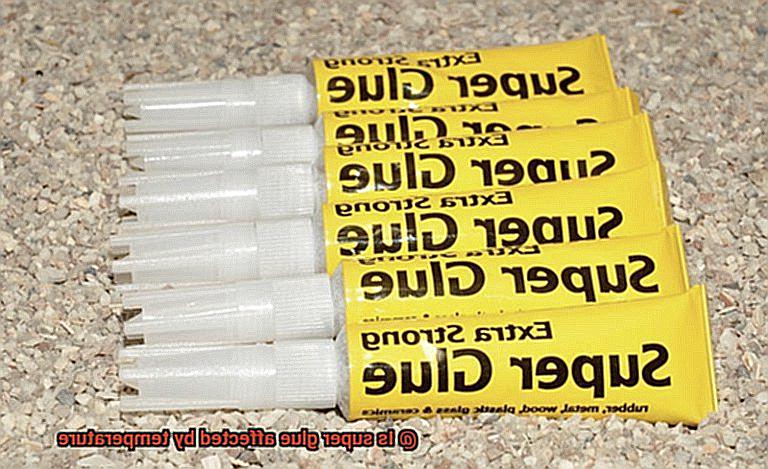
So, refrigeration is a no-go.
To maintain the quality of your super glue, follow these best practices:
- Store in a cool and dry place: The ideal temperature range for storing super glue is typically between 50°F (10°C) and 77°F (25°C). Choose a location away from direct sunlight and sources of heat.
- Keep containers tightly sealed: When not in use, always ensure that the containers are tightly sealed. This will prevent moisture and air exposure, ensuring that your glue remains in top-notch condition. Even a tiny bit of moisture can compromise the effectiveness of your adhesive.
- Check for consistency and performance: If you’ve accidentally exposed your super glue to extreme temperatures or moisture, don’t panic just yet. It may still be usable, but its effectiveness could be compromised. Before using it, always check the consistency and performance of the glue to ensure it still meets your requirements.
1hY1jyGNzIo” >
Also Read: What Temperature Does Super Glue Melt?
Conclusion
The temperature can indeed have an impact on the effectiveness of super glue.
When exposed to extreme heat, such as in high-temperature environments or direct sunlight, super glue can become less adhesive and lose its strength. On the other hand, extremely cold temperatures can cause the glue to become brittle and more prone to cracking or breaking.
Additionally, when using super glue in different temperature conditions, it’s crucial to follow the manufacturer’s instructions for optimal results.

